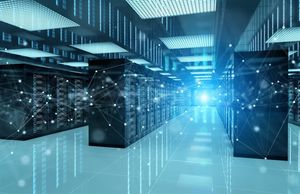Ensono’s survey found business risks drive modernization priorities, but budgets tied up in legacy systems and IT skills gaps slow progress
Ensono, a leading technology advisor, innovation partner, and managed service provider, today released the findings of its inaugural The State of IT Modernization 2025: Progress Without Disruption report. The report surveyed 500 full-time IT decision-makers across the U.S. and U.K. from organizations generating at least $500 million in annual revenue. Ensono found that enterprises embarking on modernization journeys are focused on interoperability between legacy infrastructure and newer platforms, prioritizing a gradual evolution to avoid disruption.
IT leaders identified application modernization as the most direct path to achieve hybrid alignment between legacy environments and cloud solutions. Enterprises are strategically electing to modernize some applications to remain on legacy systems, while migrating others that are more simply managed in the cloud. However, the path to modernization success is paved with years of patchwork fixes and aging systems that leave many organizations trapped under the weight of technical debt and complex architectures that call for specialized expertise.
“CIOs and IT leaders clearly recognize where they need to go with modernization, but lapses in workforce availability, expertise, and fluctuating budgets create headwinds that restrict sustained momentum,” said Brian Klingbeil, Chief Strategy Officer at Ensono. “Bridging legacy systems with the cloud can unlock enterprise acceleration, but achieving tangible outcomes requires investment in mission-specific tooling, leveraging individuals with the right skills, and seeking out support to fill gaps.”
Key Findings from the 2025 State of IT Modernization report include:
- 1 in 2 respondents (49%) reported that actual legacy maintenance costs exceeded their planned costs in the last year.
- 49% of respondents report that business risk is the primary motivator for modernization initiatives.
- 9 in 10 respondents report at least one talent gap hindering their modernization efforts — most commonly in cloud architecture and migration expertise (27%).
- 38% of respondents say stronger hybrid IT management tools would most accelerate their modernization, tied with 38% who point to the need for more skilled in-house talent.
-
AI tools have only helped 39% of IT teams accelerate their modernization efforts, with another 33% saying AI tools actually introduced new challenges.
- However, 60% report AI has been a catalyst — suggesting that AI is most effective once foundational modernization work is already underway.
- 95% of organizations are turning to third-party partners to close talent gaps and stay on track.
Respondents cited business risk as the leading modernization motivator, but despite urgency in addressing security vulnerabilities, loss of software support, or application downtime, enterprises are trapped in a cycle where legacy infrastructure consumes time, budget, and strategic focus. Detangling the technical debt of legacy systems and the complexity of hybrid IT are the leading modernization deterrents. Half of IT leaders reported budget overages for legacy maintenance costs, and budget crunches burden innovation for 86% of respondents – underscoring how the financial burden of legacy complexity stalls progress.
Expertise and tooling also stood out as missing components needed to push projects forward. 9 in 10 IT leaders identified talent gaps as a primary roadblock, with 38% calling for more highly skilled internal talent to accelerate modernization. However, in-house talent isn’t the only solution – with 95% of organizations turning to third-party partners to stay on track. 38% also called for improved hybrid environment management tools, which often dictates a need for purpose-built solutions capable of managing integration, performance, and scalability at every step.
Leading enterprises actively leveraging modernization as a differentiator most frequently had a well-defined strategy to manage cloud costs and highly structured approaches to measurement. U.K. leaders were twice as likely as their U.S. counterparts to say they are leading the way in modernization. UK leaders attribute these perceptions to having modernization goals that are very aligned with broader business initiatives and a more highly structured approach to measuring IT modernization success.
“Documenting a strategic roadmap that’s closely aligned with a clear execution plan is critical to realizing progress,” said Oliver Presland, Senior Vice President, Global Consulting Services and Deputy Managing Director, Europe, at Ensono. “Modernization leaders turn their initiatives into a competitive advantage by leveraging the right people, tools, reporting, and priorities to create structure and maximize outcomes while keeping operations consistent.”
You can access the full report here, and learn more about Ensono at: https://www.ensono.com.
About Ensono: Ensono is an expert technology advisor, innovation partner and managed service provider. As a relentless ally, we specialize in helping enterprise clients transform their organization, innovate new and disruptive technologies, and optimize their IT operations to achieve better business outcomes. Our dedicated team works across hybrid environments with services that span consulting, mainframe and application modernization, public cloud migration and cloud-native development. With certified experts in Azure and recognized as Microsoft Datacenter Transformation Partner of the Year, Ensono has over 3,500 associates globally and is headquartered in greater Chicago.
View source version on businesswire.com: https://www.businesswire.com/news/home/20250916976920/en/
Risk is the leading motivator for modernization – but enterprises are trapped in a cycle where legacy infrastructure consumes time, budget, and strategic focus despite urgency to address security vulnerabilities, loss of software support or app downtime.
Contacts
Media Contact: Molly Leahy, Senior PR Director; EnsonoPR@walkersands.com







